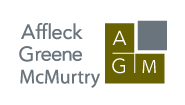Best Practices for Assessing your Risk of Fraud
rolling up your sleeves to get it right at the start
Public Sector Fraud
1. Understanding the Various Types of Fraud
This paper focuses on three basic types of fraud in the public sector. Specifically, these are:
- contracting/procurement fraud;
- claims/benefits fraud; and
- corruption/influence peddling.
In any particular scheme, these types of frauds may overlap.
a. Contracting/Procurement Fraud
There are four stages in a standard contracting/procurement process, and all are vulnerable to fraud or decisions that, either intentionally or inadvertently, facilitate fraud.[1] These stages are:
- identification of needs;
- definition of specifications;
- awarding of the contract; and
- performance of the contract.
i) Identification of Needs and Definition of Specifications
Fraud can be facilitated inadvertently at these early stages of the process. This can occur when a public servant seeks to avoid the inconvenience of dealing with the higher level of scrutiny under existing regulations. Large contracts, are split into smaller contracts to avoid the difficulties associated with the scrutiny mandated for contracts exceeding a certain monetary amount. A reduction in oversight, of course, increases the susceptibility of the process to fraud.[2]
The potential for fraud also increases if the bid process leaves open the possibility for supplemental payments. A classic situation involves the granting of a contract that includes the securing of a long-term exclusive maintenance agreement.[3]
The reduction or elimination of publicity with respect to the bidding process, which reduces competition for the contract, and any undue restrictions on the tender limiting the number of companies that are capable of putting forward a bid, can also facilitate situations where a government ends up paying more than an appropriate amount for a contract.[4]
ii) Awarding of the Contract
The above problems can be inadvertently or deliberately created by the government personnel involved. If these individuals are actively trying to funnel a contract to a particular party and/or increase the value of the contract to that party, there are a number of additional steps that can be taken. They can restrict the tender process, make the award criteria highly subjective or modify the criteria or their weight after the bids are received.[5] Another technique is to make an open tender inconclusive to prevent any non-preferred bidders from succeeding.[6]
At the point of the award of the contract, steps can also be taken that would facilitate future fraud under the contract. These include the omission of protective mandatory clauses in favour of the government of the type that one would typically find in such a contract.[7]
iii) Performance of the Contract
Fraud most often occurs at this stage. It can result from either complicity or lax governance by public employees. Such fraud will often involve billing for studies, or work never completed, or passing off previous work as work being done under the contract.[8] These are various types of false or misleading invoicing.[9]
An example of false invoicing where there is no fraudulent activity on behalf of government employees but, instead lax oversight is the situation involving a doctor who submitted false claims to OHIP for an amount in excess of $1 million over a seven year period.[10] An example of a fraudulent benefit that can be obtained with the complicity of government personnel involves the non-enforcement of certain penalty or other contractual clauses that would otherwise provide financial and advantage to the government in the context of contractual performance.[11]
b. Benefits/Claims Fraud
Benefits/claims fraud involves the use of deception to obtain a benefit that one would not otherwise receive. For example, the obtaining of benefits such as emergency relief or drug benefits fall into this category.
A recent U.S. Government Accountability Office report estimated that there were fraudulent assistant payments ranging between $600 million and $1.4 billion under the hurricanes Katrina and Rita relief programs.[12] Similarly, in Canada the Auditor General reported that in 2002/2003, 24% of the individuals enrolled in methadone programs were also receiving prescriptions for methadone or other opiates from multiple doctors, and 75% of those individuals used a different pharmacy for each drug.[13]
Tax fraud and the filing of false expense reports are two other methodologies that fall within this category. One recent example of tax fraud is the “flipping scheme” where a perpetrator generates false invoices to provide the appearance that the sale of a big-ticket item is exempt from goods and services tax (GST) when, in fact, it is not. The original seller then pockets the GST less a commission to his GST exempt accomplice.[14] There are variants of flipping in which the flipped items do not exist.[15] With respect to false invoices, there is a recent example involving the conviction of five federal employees who submitted false expense reports supporting forged documents, receiving an amount in excess of $800,000.00.[16] Elected officials have also been convicted for submitting false expense reports.[17]
c. Corruption/Influence Peddling
Corruption and influence peddling involve the use of a person’s public position to obtain private gain. An example is the situation where a public official awards an overpriced contract to a bidder who has provided illegal consideration to the official. This scenario also entails contracting fraud and obviously results in a direct financial loss to the public.
There are also situations, such as a recent case of influence peddling by a member of the Immigration and Refugee Appeals Board, in which favourable decisions are offered in exchange for funds.[18] A favourable decision in and of itself does not result in a direct financial loss to the public. However, it undermines the legal and policy choices made by the public through its institutions and in that sense constitutes a fraud. It also serves to undermine the publics’ confidence in its institutions. Although the harm is more difficult to calculate with respect to this type of corruption, it is clearly substantial.
2. Exploring where fraud arises
a. The Public at Large
Peter Dorrington, the Head of Fraud Solutions at SAS UK , notes that a key difference between the public and private sector is that very often the public sector cannot choose with whom they do business.[19] As a result, it is more susceptible than the private sector to frauds. Frauds emanating from the public at large tend to fall primarily into the category of claims/benefits fraud. An unfortunately typical example of this type of fraud was identified in R. v. McIssac,[20] where a couple was convicted for failing to declare a pension received from abroad when they applied for provincial social assistance.
b. Suppliers to the Public at Large
Contracting fraud is the most common fraud that arises from suppliers to the public at large. It has been discussed above. There can be fraud perpetrated on a government, however, where there is not necessarily a direct contracting relationship.
For example, counterfeit drugs have been and remain a significant problem.[21] Counterfeit drugs do not refer to generic drugs that may be infringing patents. Rather, counterfeit drugs are those that “closely resemble legitimate drugs yet may contain only inactive ingredients, incorrect ingredients, improper dosages, sub-potent or super-potent ingredients, or be contaminated.”[22] Nevertheless, some counterfeits require highly skilled analysis to detect.[23]
The most obvious harm is caused to the patients. However, significant financial damage will also be caused to the government.
Firstly, if the purchase was covered by a public drug benefits plan the harm is direct. Secondly, if the counterfeit is detected, then it is likely that the plan will be expected to again purchase the authentic drug increasing the harm. Finally, as there is a public healthcare system in place the public will bear the cost of any additional treatments required because of the counterfeit drugs.
c. Within the Public Sector
All four types of fraud discussed above can emerge from the public sector. Public servants can initiate or abet claims/benefits fraud. Similarly, they may participate in contracting fraud. Although it is conceivable that somebody would blindly approach a public servant with a quid pro quo offer asking the public servant to use his or her influence, more often it is the public-servant who first signals an interest in such an arrangement. This highlights the importance of hiring practices in combating fraud.
3. Application of Private sector methods TO THE PUBLIC SECTOR
a. The Importance of Sound HR Practices
People are the most important resource in any attempt to combat fraud. Preventing the hiring of corrupt individuals, and acquiring and keeping the human resources to detect and prevent fraud, pose the most significant challenge to a government body..
Very often fraud originates with people are internal to the organization.[24] Consequently, proper screening at the application and interview stage is a critical first step to reducing fraud. Proper interview techniques and the use of, criminal background checks, credit checks and searches of public records such as a non-specific name search of the PPSA registry can raise red flags.[25] These techniques are used in the private sector—particularly by financial sector employers such as banks—and in some areas of the public sector—primarily when security clearances are required. A broader application across the public sector can reduce the risk of fraud.
For example, the Government of Saskatchewan recently instituted criminal background checks for all public sector employees. This came about after the discovery that an employee at the Saskatchewan Department of Community Resources and Employment had misused approximately $1 million of public money over a twelve year period.[26]
The Saskatchewan auditor cited failures to properly segregate duties, effectively provide direction to employees, properly oversee employees and a lack of sound employee hiring strategies as factors that allowed the fraud to occur and remain undetected for so long.[27]
It is also important to be able acquire and retain the expertise necessary to effectively prevent and detect fraud. Higher salaries promote independence. Independence reduces the likelihood of corruption and the frauds that come with it. The higher compensation received by Hong Kong’s Independent Commission Against Corruption relative to salaries in other government agencies is cited as a successful example of this approach.[28]
Employee training is important as well. For example, the US GAO examined the emergency relief program following Hurricanes Katrina and Rita. The GAO found that although there were limited verification controls for online applications, there were no such control procedures provided to the people dealing with applications made over the telephone.
Applicants whose online applications were rejected because of an invalid social security number were told to contact the agency by telephone. [29] This facilitated an increase in fraudulent claims because applications by telephone were subject to no verification procedures.[30]
It is also important to have mechanisms whereby civil servants not specifically charged with oversight can bring forward instances of public-sector fraud.[31] There are some legal protections for whistle-blowers employed by the government, which are discussed by other speakers in much greater detail.[32]
However, a public-servant walks a fine line when criticizing government waste. Criticism of waste clearly caused by fraud will be afforded some protection. Criticism of waste sanctioned by policy decisions of the government in power will not. As Dickson C.J.C. noted:
As a general rule, federal public servants should be loyal to their employer, the Government of Canada. The loyalty owed is to the Government of Canada, not the political party in power at any one time. A public servant need not vote for the governing party. Nor need he or she publicly espouse its policies. And indeed, in some circumstances a public servant may actively and publicly express opposition to the policies of a government. This would be appropriate if, for example, the Government were engaged in illegal acts, or if its policies jeopardized the life, health or safety of the public servant or others, or if the public servant’s criticism had no impact on his or her ability to perform effectively the duties of a public servant or on the public perception of that ability. But, having stated these qualifications (and there may be others), it is my view that a public servant must not engage, as the appellant did in the present case, in sustained and highly visible attacks on major Government policies.[33]
b. The Importance of Sound Contracting Policies
The US Government Accountability Office recommends adoption of sound contracting practices to address the vulnerabilities of the public-sector to contracting fraud. Many of these recommended practices were taken from the private-sector. The primary categories of recommendation focus upon:
- sustained senior leadership;
- acquisition workforce capabilities;
- pricing adequacy;
- contracting approaches and techniques; and,
- contract surveillance.[34]
Sustained senior leadership reduces the likelihood of fraud by ensuring that personnel—both internal and external to the contracting organization—focus on the interests of the organization.[35] The absence of senior leadership makes it difficult to establish a strong organizational ethical code. Similarly, periods with unfilled positions reduce an organizations’ ability to separate duties, which is an important safeguard that increases the difficulties faced by a potential perpetrator of fraud.[36] By ensuring strong senior leadership in conjunction with systems for developing mid-level managers and future senior leaders, the public-sector can mitigate its exposure to fraudulent practices.
Acquisition workforce capabilities and pricing adequacy are closely related. Acquisition workforce capabilities ensure the presence of knowledge about market conditions, industry trends and technical details enhancing the organization’s ability to obtain a fair and reasonable price.[37] Knowledge of these areas reduce “pricing risks [that] stem from non-competitive contract actions, delays in setting requirements for undefinitized contracts, failure to use available pricing information, and misclassification of items as commercial items.”[38] Competitive public-sector salaries assist in mitigating these risks by encouraging the recruitment and retention of people with the knowledge and analytical skills necessary to ensure proper contract pricing.
Notably, many pricing risks arise from the use of inappropriate contracting techniques. The use of loosely drafted contracts make it more difficult to control costs “because information detailing the requirements and potential costs are likely vague or undefined.”[39]
Contract surveillance assists in the early detection of fraud. Retention of employees for longer periods facilitates contract surveillance and adequate staffing allows delegation of this task to multiple people. Both of these reduce the likelihood that contracting fraud will continue undetected.
c. The Use of Information Systems
Data mining can assist in detecting and reducing occurrences of public-sector fraud. Data mining originated in the private-sector as a tool used in customer and market research.[40] It is now used in the private sector as a fraud detection tool.
Relative to the private-sector, the public-sector has both advantages and disadvantages when it comes to using data to detect fraud. Its advantages include:
- Access to large quantities of data that permits a comprehensive view; and
- Political will to accept financial risks that would be unacceptable to the private sector.[41]
Typically, the public-sector has access to more data than the private-sector. This data provides greater detail and wider coverage than data available to the private sector. The public sector may be willing to bear risks unacceptable to the private-sector in terms of investing in the technical infrastructure to increase fraud detection capabilities.
However, the public-sector also typically suffers a number of disadvantages in comparison to the private-sector. These include:
- Difficulty integrating disparate—and often very old—archives of data; and
- Legislation that often lags technical abilities.[42]
Specifically, the lengthier history of data collection in the public-sector can make technical integration more difficult. Old records and archives combined with ad hoc approaches to data storage and retrieval can make it more difficult to access the data relevant to detecting fraud.
A striking example of the difficulties the public-sector faces in accessing and using information is demonstrated by the fact that in 2005 there were $18 billion in uncollected taxes, interest and penalties owed to the Canada Revenue Agency.[43] This is the unpaid amount on files not in dispute. More striking is that it is three times larger than the $6 billion outstanding on files being disputed.[44] Although not fraud, the example illustrates the some of the public-sector’s problems with managing data and exploiting the data to its financial benefit.
Although used in the public-sector, the permitted uses of pattern detection technologies to detect fraud under legislation typically lag its technical capabilities. For example, it is problematic as to whether the use of automated software agents would contravene federal[45] and provincial[46] legislation if those agents have access to databases administered by multiple agencies and/or levels of government. An automated software agent operating pursuant to a warrant or court order would appear to comply with the legislation. The presence of a warrant or court order requires some knowledge or reasonable grounds that fraud is occurring. However automated software agents are most useful at the early detection of patterns typical of fraud—that is, before there is knowledge or reasonable grounds to believe a specific instance of fraud is occurring. The legality of this use of automated software agents—i.e. in the circumstances in which they are most useful—that is a bar to the use of this technology.
Published October, 2006
[a] Presented to the Canadian Institute’s Intensive Summit on Fighting Fraud in the Public Sector ( Toronto ), 26-27 September 2006.
[1] Jean-Pierre Beub and Nicola Ehlermann-Cache, “Inventory of Mechanisms to Disguise Corruption in the Bidding Process and Some Tools for Prevention and Detection,” in OECD, Fighting Corruption and Promoting Integrity in Public Procurement, (Paris: OECD Publishing, 2005) at 163 online: <http://www.oecdbookshop.org/oecd/get-it.asp?
REF=2805081E.PDF&TYPE=browse>.
[2]Ibid. at 164.
[3]Ibid. at 163-64.
[4]Ibid.
[5]Ibid. at 164-65.
[6]Ibid. at 165.
[7]Ibid. at 165-66.
[8]Ibid. at 163.
[9]Ibid. at 171.
[10]R. v. Bogart (2002), 61 O.R. (3d) 75, [2002] O.J. No. 3039, 162 O.A.C. 347, 167 C.C.C. (3d) 390, 54 W.C.B. (2d) 712 ( C.A. ); leave to appeal to SCC refused [2002] S.C.C.A. No. 398.
[11]Supra, n. ii at 165.
[12] U.S. , Government Accountability Office, Hurricanes Katrina and Rita Disaster Relief: Improper and Potentially Fradulent Individual Assistance Payments Estimated to Be Between $600 Million and $1.4 Billion, (GAO-06-844T) ( Washington , DC , 2006) at 8 [Katrina Relief].
[13] Canada , Office of the Auditor General, Report of the Auditor General of Canada to the House of Commons – November 2004 , ( Ottawa , ON : Minister of Public Works and Government Services, 2004) at ¶4.42.
[14] See e.g., R. v. Foy, [2003] O.J. No. 6109, [2005] G.S.T.C. 31 (detailed description of how the fraud operates).
[15] See e.g., R. v. Tulloch, [2002] O.J. No. 5446 (Sup. Ct. Jus.); R. v. Prokofiew, [2004] O.J. No. 1388 (Sup. Ct. Jus.) (Conspiracy to defraud government of $6.2 million).
[16] Sharon Griffin and Justin Thoman, “Protecting your company against in-house fraud,” The Lawyers Weekly, Vol. 23, No. 48 ( 23 April 2004 ) [In-house fraud].
[17] See e.g., R. v. Berntson, [1999] S.J. No. 89, 178 Sask. R. 1, 41 W.C.B. (2d) 321.
[18] See R. v. Macaluso, [2006] Q.J. No. 3890, 2006 QCCS 2301; Bourbonnais v. Canada (Attorney General), [2006] A.C.F. no 206, 2006 CAF 62, 267 D.L.R. (4th) 120, 348 N.R. 28, 147 A.C.W.S. (3d) 473 (C.A.) affirming [2004] A.C.F. no 2140, 2004 CF 1754, [2005] 4 F.C.R. 529, 267 F.T.R. 169, 49 Imm. L. R. (3d) 225, 141 A.C.W.S. (3d) 810.
[19] Peter Dorrington, “Public Sector Fraud: When You Can’t Choose Who to Do Business With”, Online Lecture presented 31 May 2005 , BetterManagement.com.
Online: <http://www.bettermanagement.com/seminars/
seminar.aspx?l=12019> [Public Sector Fraud].
[20] [1998] B.C.J. No. 1946, 39 W.C.B. (2d) 355 (B.C. S.C.).
[21] US, Food and Drug Administration, “Combating Counterfeit Drugs: A Report of the Food and Drug Administration” ( Rockville , MD : February 2004) online: <http://www.fda.gov/oc/initiatives/counterfeit/report02_04.html>.
[22]Ibid.
[23] Andrew E. Kramer, “Drug Piracy: A Wave of Counterfeit Drugs Washes Over Russia,” New York Times, 5 September 2006 , Online:
<http://www.nytimes.com/2006/09/05/business/
worldbusiness/05fake.html?_r=1&oref=slogin&pagewanted=all>.
[24]In-house fraud, supra n. xvii.
[25] Stephen Rosen, “Avoiding Fraud,” Due Diligence and Risk Management, Vol. 1, Issue 3 (Autumn 2000).
[26] Saskatchewan , Provincial Auditor, 2005 Report – Volume 1 ( Regina , SK , 2005) at 73-75.
[27]Ibid. at 74.
[28] G. Shabbir Cheema, “Public Service Ethics: Global Practices and Tools” (Presentation to the Meeting of Sectoral Delegates on Public Ethics, Brasilia, Brazil, 20-21 March 2002) [unpublished] online: United Nations, Department of Economic and Social Affairs,
<http://unpan1.un.org/intradoc/groups/public/documents/
un/unpan010812.pdf>.
[29] U.S. , Government Accountability Office, Expedited Assistance for Victims of Hurricane Katrina and Rita, (GAO-06-655) ( Washington , DC , 2006) at 14 [Expedited Assistance].
[30]Katrina Relief, supra n. xiii at 8.
[31] Lorne Sossin, “Speaking Truth to Power? The Search for Bureaucratic Independence in Canada ” 55 U.T.L.J. 1 (Winter, 2005).
[32] See e.g. Fraser v. Pubic Service Staff Relations Board, [1985] S.C.J. No. 71, [1985] 2 S.C.R. 455, 23 D.L.R. (4th) 122, 63 N.R. 161, J.E. 86-48, 18 Admin. L.R. 72, 9 C.C.E.L. 233, 19 C.R.R. 152, 34 A.C.W.S. (2d) 9 (per Dickson C.J.C.).
[33]Ibid. at ¶41.
[34] U.S. , Government Accountability Office, Contract Management: DOD Vulnerabilities to Contracting Fraud, Waste, and Abuse (GAO-06-838R) ( Washington , D.C. , 2006) at 2 [DOD Contracting].
[35]Ibid. at 6.
[36]DOD Contracting, supra n. xxxv at 6.
[37]DOD Contracting, supra n. xxxv at 7-8.
[38]DOD Contracting, supra n. xxxv at 9.
[39]DOD Contracting, supra n. xxxv at 10.
[40] Steven Philippsohn, “What is Fraud and How to Track it Down”, BetterManagement.com, online:
<http://www.bettermanagement.com/library/library.aspx?l=5039>.
[41]Public Sector Fraud, supra n. xx.
[42]Ibid.
[43] Canada , Office of the Auditor General, Report of the Auditor General of Canada to the House of Commons – May 2006 , ( Ottawa , ON : Minister of Public Works and Government Services, 2006) at ¶8.18.
[44]Ibid.
[45] See, e.g., Personal Information Protection and Electronic Documents Act, S.C. 2000, c. 5; Privacy Act, R.S.C. 1985, c. P-21.
[46]Freedom of Information and Protection of Privacy Act, R.S.O. 1990, c. F.31.
article keywords: fraud, deceit, procurement, misrepresentation, public sector, bidding, government, tendering, government contracts, scandal, sponsorship, benefits, corruption, influence peddling











